How to Generate Shopping List That Saves Time & Money
Learn how to generate a shopping list efficiently. Discover tips to save money, reduce waste, and make grocery shopping easy and stress-free.
Ready to Simplify Your Meal Planning?
Get personalized meal plans and grocery lists automatically matched to your macro targets.
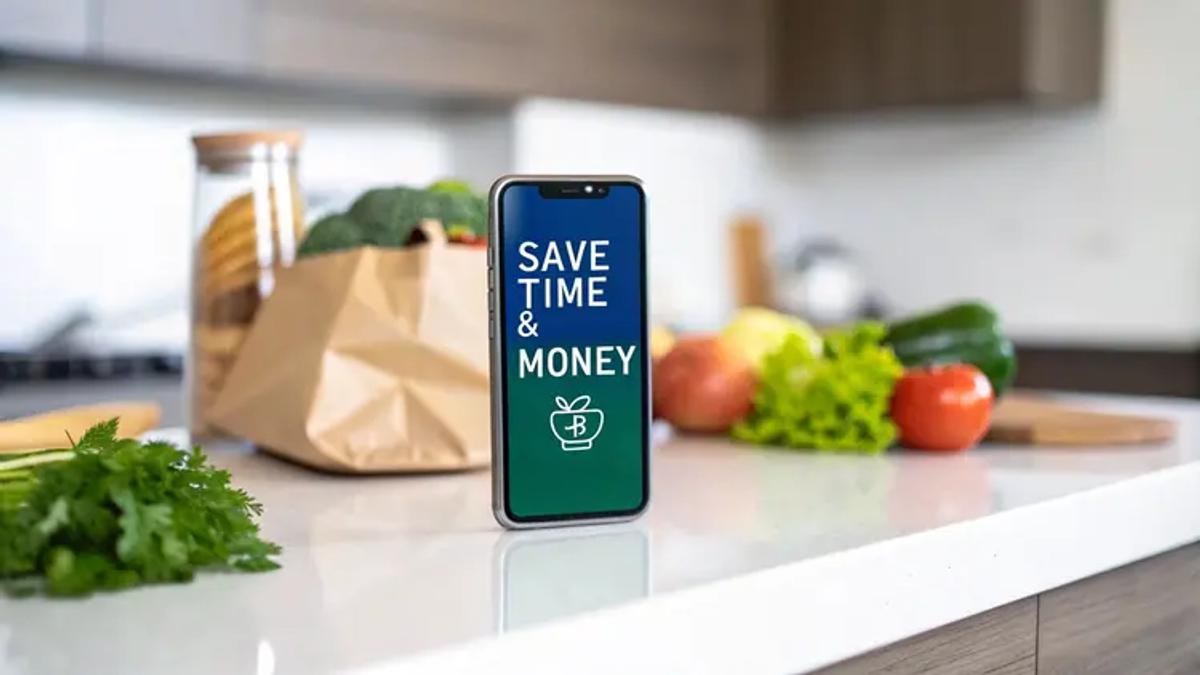
How to Generate Shopping List That Saves Time & Money
Why Well-Crafted Shopping Lists Transform Daily Life
Shopping lists are more than just scraps of paper; they're secret weapons that can revolutionize your spending habits. Think of them as treasure maps, guiding you through the grocery store jungle and preventing you from getting lost in a sea of tempting treats. This focused approach helps you resist those impulse buys that mysteriously appear in your cart. Imagine yourself confidently navigating a crowded market with a precise list compared to wandering aimlessly – the difference in focus and efficiency is undeniable.
Having a well-crafted shopping list helps to curb those pesky impulse purchases, a major culprit behind budget blowouts. Studies have shown that using a list can slash these spontaneous buys by a whopping 40%. That's a serious chunk of change you can redirect towards things you actually planned for, like that dream vacation or a new gadget. Plus, this mindful planning also reduces food waste, as you only buy what you need for your delicious meals.
Saving Time, Money, and Mental Energy With Strategic Lists
Beyond the financial perks, creating a shopping list offers some serious cognitive benefits too. It frees up valuable mental space by outsourcing the job of remembering what you need. In our busy modern lives, with constant information overload, this is a lifesaver. Your list becomes a mental decluttering tool, letting you focus on other important things rather than mentally juggling groceries.
A structured list also brings a sense of calm and control to the often-chaotic retail environment. It's like an anchor in a storm of cleverly designed displays and marketing strategies aimed at tempting you into buying things you don't need. This means you can stay focused on your goals and avoid getting swept away by shiny offers that don't align with your budget or your pantry.
The Evolving Landscape of Shopping List Generation
The way we create shopping lists is constantly changing. Online grocery shopping and digital platforms have completely transformed how we plan and manage our purchases. Speaking of groceries, there's a growing trend towards private labels. According to a report by NIQ, by 2025, a remarkable 50% of global respondents will be buying more private label products, highlighting the shift towards budget-friendly options. This trend influences how we create our shopping lists, with many people opting for store brands over big-name national brands. Plus, the rise of online grocery shopping means digital platforms are becoming essential tools for building and managing lists, making it easier to compare prices and track spending digitally. Learn more about these evolving grocery trends here. These advancements give us the power to make smarter shopping decisions, perfectly balancing our budget and our individual preferences, leading to maximum value and minimal waste.
Digital Tools That Revolutionize How You Generate Shopping Lists
Gone are the days of scribbled shopping lists on scraps of paper. Today, digital tools are changing how we create shopping lists, with features ranging from voice-activated input to AI-powered predictions. This mirrors the wider shift towards digital commerce: global e-commerce sales are expected to hit a whopping $8 trillion by 2027, showing a clear move to online shopping management. This has greatly changed how we make and manage shopping lists, with many now using apps and digital tools every day. Want to learn more? Dive into the world of online shopping stats here. These tools promise to save you time, reduce waste, and help you stick to your budget.
Voice Assistants and Smart Speakers
For busy folks, voice assistants like Siri, Alexa, and Google Assistant offer a hands-free way to create shopping lists. Imagine needing olive oil while kneading dough. Just tell your smart speaker to add it to your list, and voila! It's that simple. This easy integration into daily life makes remembering items a breeze.
AI-Powered Shopping List Apps
Some apps go beyond basic list-making and use AI to learn your shopping habits. These clever tools can predict when you're about to run out of staples like milk or bread, automatically adding them to your list. This helps you avoid forgetting essentials and makes weekly grocery planning simpler. It also takes away the mental burden of constantly checking your pantry.
Meal Planning Integration
Many digital tools work with meal planning platforms, letting you create a shopping list directly from your chosen recipes. This makes it easy to ensure you have all the ingredients for your weekly meals. This integrated approach streamlines grocery shopping, turning meal planning into a smooth and effective process.
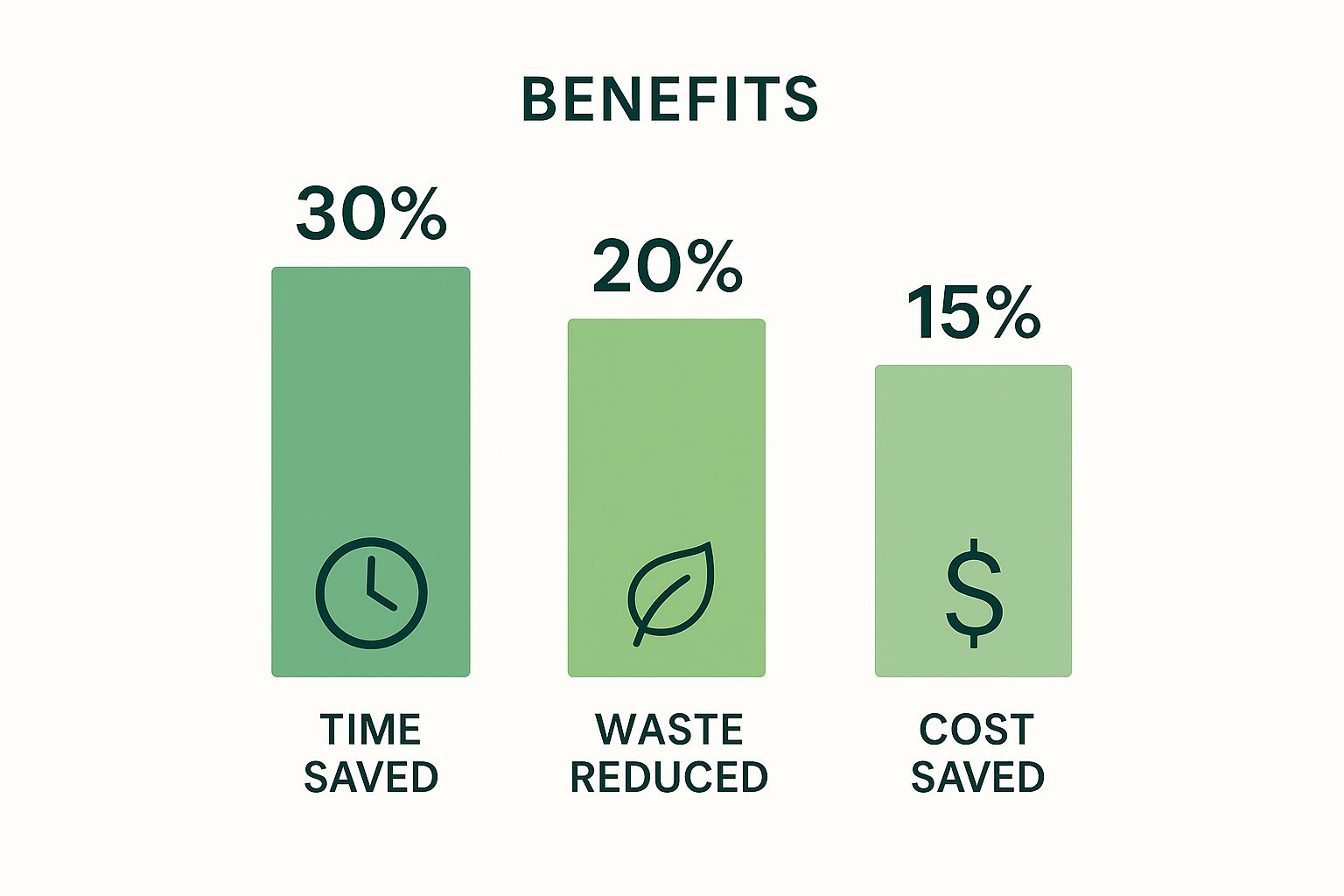
The infographic above shows how much you can benefit from using digital tools to generate shopping lists, highlighting significant savings in time, waste, and money. It's the perfect blend of convenience and efficiency, leading to big improvements in how we manage our grocery shopping. The data reveals potential time savings of 30%, waste reduction of 20%, and cost savings of 15%. These numbers are pretty impressive, right?
Choosing the Right Tool for You
While there are tons of digital shopping list generators out there, they're not all the same. Some people might be happy with basic list-making apps, while others might need the advanced features of AI-powered platforms. For instance, Meal Flow AI, which is made for meal planning and Instacart integration, gives you personalized meal plans and automatically creates shopping lists. It’s great for busy individuals and families. The best tool for you really depends on what you need and prefer, from simple lists to full-on meal planning.
To help you navigate the exciting world of shopping list apps, we've put together a handy comparison table:
Top Shopping List Apps Comparison
Comparison of popular shopping list applications based on key features and functionalities
| App Name | Price | Cross-Platform | Sharing | Meal Planning | Inventory Tracking | Budget Integration |
| AnyList | Free, Premium features available | Yes | Yes | Yes | Yes | No |
| OurGroceries | Free, Premium features available | Yes | Yes | Yes | Limited | No |
| Bring! | Free | Yes | Yes | Yes | No | No |
| Mealime | Free, Premium features available | Yes | Yes | Yes | No | No |
| Paprika Recipe Manager 3 | One-time purchase | Yes | Yes | Yes | No | No |
| Grocery Pal | Free | Yes | Yes | No | No | Yes |
As you can see, there's an app for everyone! While some apps offer robust features like inventory tracking and meal planning, others focus on simplicity and sharing. Consider what matters most to you and choose accordingly.
How Culture Shapes the Way We Generate Shopping Lists
Shopping lists aren't just about grabbing milk and bread; they're a peek into our cultural quirks and habits. Picture this: a Parisian shopper picking up a fresh baguette daily versus a North American grabbing a week's worth of frozen dinners. These differences aren't accidental; they're ingrained in cultural traditions around food, family, and even tech. Let's dive into how culture influences our shopping lists and uncover some surprising approaches you might want to steal.
From Daily Markets to Weekly Hauls: The Cultural Impact
In Mediterranean cultures, daily trips to the local market for fresh ingredients are the norm. This focus on seasonal goodness influences their shopping lists, often based on what looks best that day rather than long-term meal planning. On the other hand, in North America, giant supermarkets and the allure of processed foods lead to weekly shopping extravaganzas and longer, more organized lists. These different approaches stem from cultural norms and how we access food.
The Digital Divide: How Technology Shapes Shopping Lists
Smartphones and e-commerce have revolutionized shopping lists (well, for some of us). In places with high smartphone use, digital shopping lists and apps like Meal Flow AI are all the rage, syncing seamlessly with online grocery delivery. But in areas with limited digital access, pen and paper still reign supreme. This digital divide highlights how technology shapes our planning and buying habits. For instance, the 2025 Global Digital Shopping Index found that Saudi Arabian consumers engaged in digital shopping for about 69 days per month, a huge difference compared to countries like the U.S. This shows the global variation in digital shopping trends. Check out the full stats here.
Family Structures, Meal Traditions, and Food Accessibility
Family size and meal traditions also play a role. Big families often mean bulk buying, leading to detailed lists organized by category. Cultures with big communal meals might prioritize certain ingredients or dishes, influencing the list's contents. Even access to fresh food matters: in areas where fresh produce is scarce, shopping lists may lean towards shelf-stable items. These cultural nuances show how individual situations and community values shape the simple act of list-making.
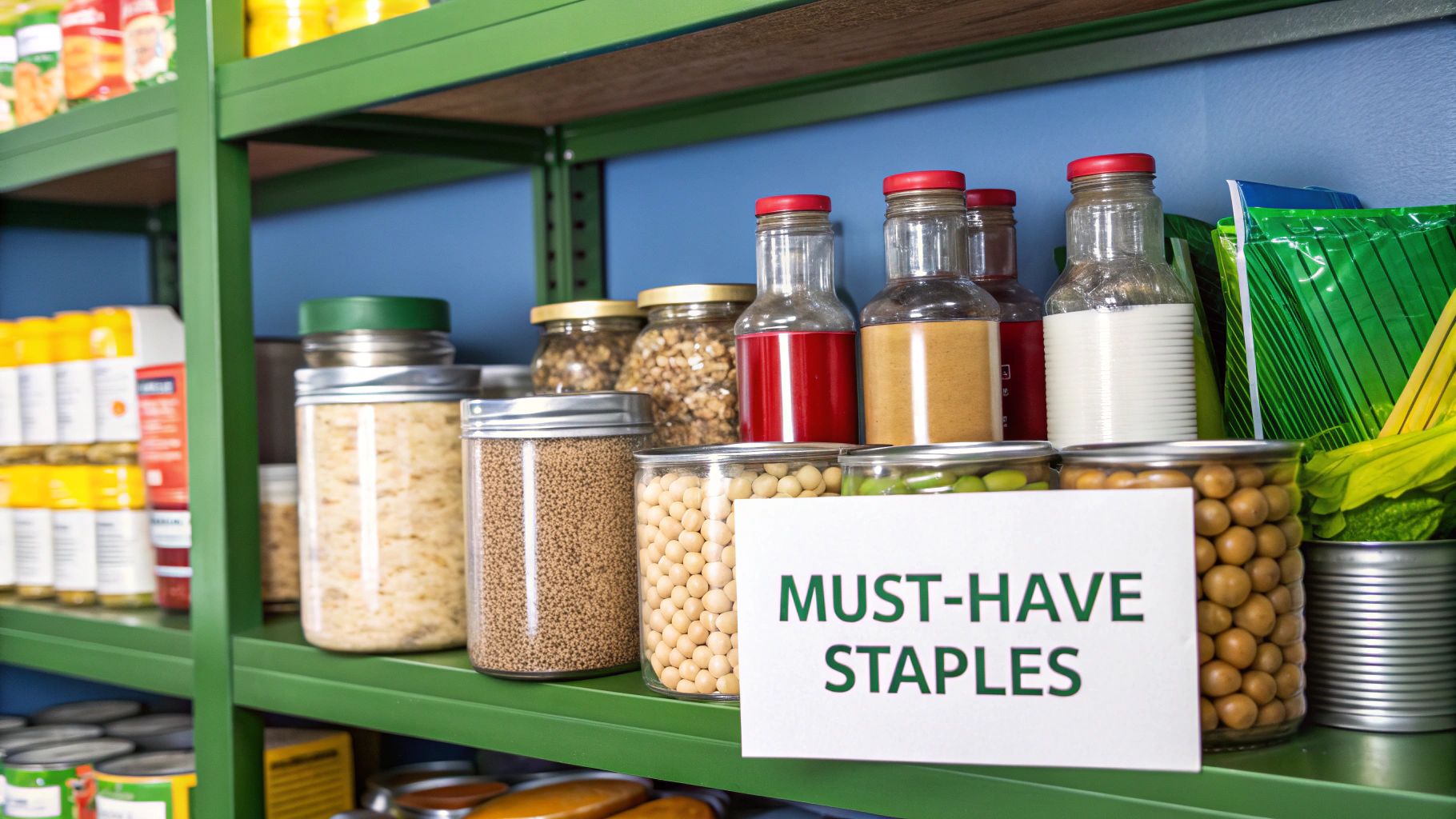
Beyond Groceries: Healthcare Systems and Shopping Lists
Believe it or not, even healthcare systems can influence our shopping lists. In countries with universal healthcare, prescription meds might not make the cut. But where individuals manage their own medication costs, these become essential list items. This reveals how even seemingly unrelated factors can influence our buying habits and how we organize our shopping. By understanding these cultural influences, we can gain valuable insights into optimizing our own shopping lists and appreciate the diverse ways people around the world plan meals and tackle grocery shopping.
Transform Meal Planning into Perfect Shopping Lists
Let's face it, wandering the grocery store aisles hoping inspiration strikes is rarely a recipe for success. The real magic happens when you approach your shopping list with a well-defined meal plan. Think of your meals as culinary masterpieces and your shopping list as the treasure map to finding all the right ingredients. This strategy not only minimizes those dreaded forgotten items but also puts a serious dent in food waste – a win for your wallet and the planet. Studies show that meal planning can slash food waste by a whopping 60%.
Pantry Inventory: The First Step to a Smarter List
Before you even grab a pen, take a peek inside your pantry. A quick inventory is like a pre-game warm-up for your shopping adventure. It prevents buying duplicates of items already hiding in the back of your cupboards. This clever move saves you money and helps you use up what you have before it expires. Who doesn't love a good pantry treasure hunt?
Meal Planning Strategies That Maximize Efficiency
Strategic meal planning is the secret sauce to an optimized shopping list. Look for recipes that share common ingredients. Planning a stir-fry with onions? Great! Make sure your mid-week soup also calls for them. This maximizes ingredient overlap, making your shopping trip more efficient and leaving fewer lonely leftovers. One trip, multiple meals – now that's smart shopping.
Incorporating Seasonal Produce, Batch Cooking, and Portion Planning
Embrace the flavors of the season! Planning your meals around seasonal produce is a fantastic way to save money and enjoy peak flavor. Seasonal fruits and vegetables are often cheaper and tastier. Consider batch cooking staples like grains or beans to save time throughout the week. Don't forget portion planning – knowing exactly how much you need prevents both shortages and excess, further minimizing waste and maximizing the value of your grocery haul. You'll have just what you need, no more, no less.
Adapting Your List for Dietary Needs and Nutritional Goals
Your shopping list should also reflect your unique dietary needs and nutritional goals. Whether you're vegetarian, gluten-free, or following another specific diet, your shopping list should be your ally. Don't worry, it doesn't have to be complicated. Tools like Meal Flow AI offer personalized meal plans and automatically generate shopping lists tailored to specific dietary restrictions, making healthy eating a breeze. They simplify the whole process, letting you focus on your health goals without the hassle.
From Meal Plan to Shopping List: A Practical Example
Let's see this in action. Imagine planning a week with chicken stir-fry, lentil soup, and roasted vegetables. Your list would naturally group ingredients into categories like produce, proteins, and pantry staples. This organized approach streamlines your entire shopping experience, from planning to checkout.
To illustrate this further, let's look at a sample meal plan and how it generates a categorized shopping list:
Sample Weekly Meal Plan & Shopping List Generator: How a weekly meal plan translates into an organized shopping list by category
| Meal | Ingredients Needed | Already in Pantry | Need to Purchase | Estimated Cost |
| Chicken Stir-Fry | Chicken, broccoli, carrots, soy sauce, rice | Rice, soy sauce | Chicken, broccoli, carrots | $15 |
| Lentil Soup | Lentils, carrots, celery, onion, vegetable broth | Lentils, onion | Carrots, celery, vegetable broth | $10 |
| Roasted Vegetables | Broccoli, bell peppers, zucchini, olive oil | Olive oil | Broccoli, bell peppers, zucchini | $8 |
This table demonstrates how a meal plan becomes your shopping list's best friend. By clearly outlining what you need and what you already have, you can generate a shopping list that's both accurate and budget-friendly. Say goodbye to impulse buys and hello to a strategic and enjoyable shopping experience. This streamlined method transforms grocery shopping from a chore into a satisfying part of your weekly meal prep routine.
Generate Shopping Lists That Keep Your Budget Intact
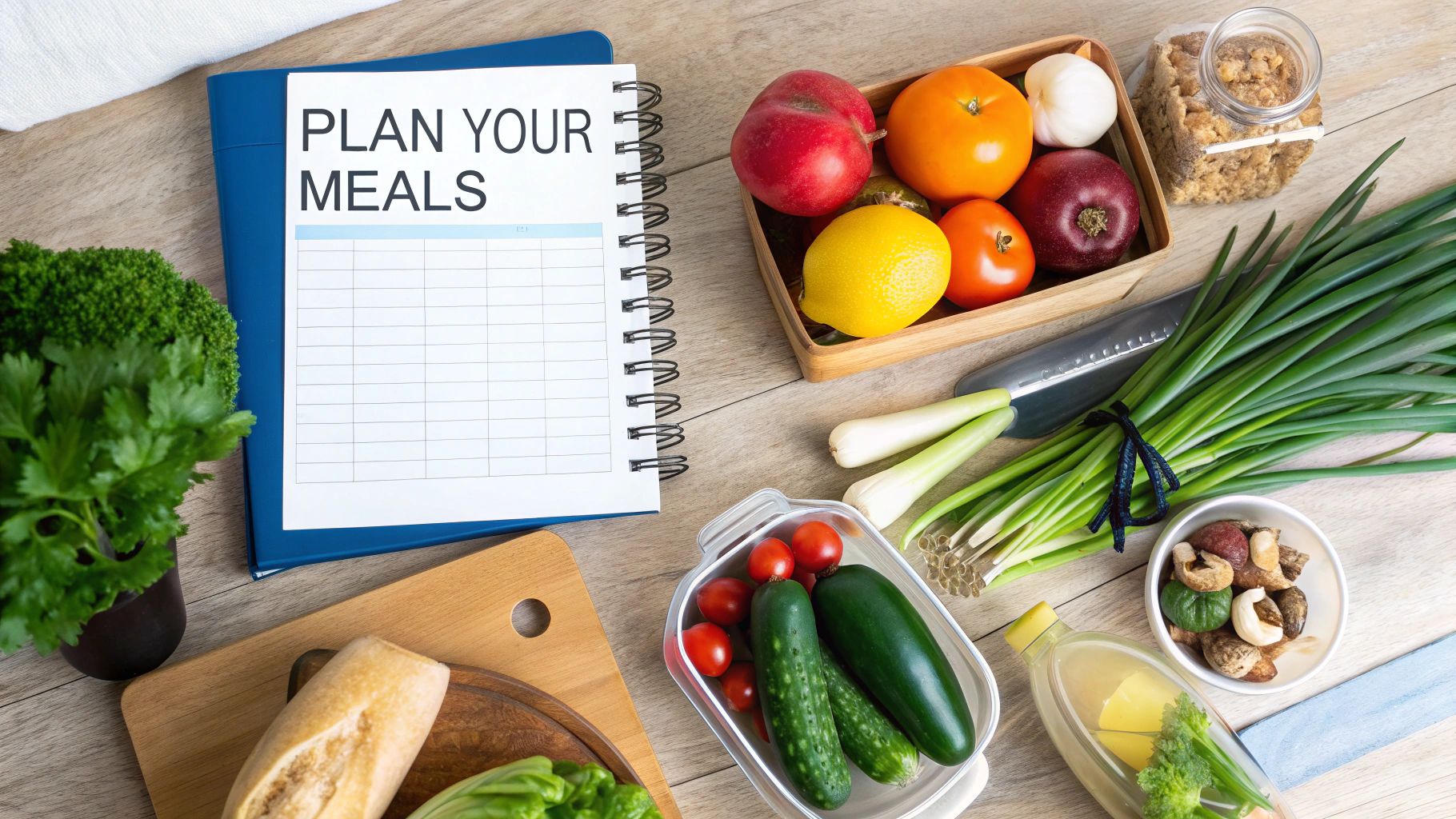
Forget scribbled notes on the back of envelopes! A well-crafted shopping list is more than just a memory aid – it's your secret weapon for conquering the grocery store and keeping your finances in fighting shape. It's all about making smart choices before you're surrounded by tempting treats, ensuring you get the most bang for your buck.
Tracking Price Fluctuations and Sales Cycles
Savvy shoppers know the game: prices dance, and sales cycles spin. By keeping an eye on those price fluctuations across different stores and getting a feel for the rhythm of sales, you can unlock serious savings. Imagine knowing that chicken breasts go on sale every other week – you plan your meals around it, swoop in when the price is right, and bam! Savings achieved. Over a year, those little victories add up to a surprisingly hefty sum.
Distinguishing Between Needs and Wants
Budgeting isn't about deprivation; it's about making informed choices. Your shopping list becomes a battlefield where essential purchases face off against discretionary items. Prioritize those must-haves – the milk, the bread, the cat food – and then allocate a portion of your budget for those "nice-to-have" indulgences. It's all about balance, baby!
Calculating True Value With Price-Per-Unit Analysis
Don't be fooled by flashy packaging and screaming "deals!" Price-per-unit analysis is your superpower. Compare the price per ounce, pound, or unit – is that jumbo-sized box of cereal really a better deal than the smaller one? This simple calculation can reveal hidden truths and empower you to make the smartest choice for your wallet.
Integrating Coupons and Discounts
Coupons and discounts aren't just for extreme couponers; they're for anyone looking to stretch their budget further. Make them an integral part of your list-making process. Apps like Meal Flow AI can be your allies, helping you add coupons, track discounts, and ensure you never miss a chance to save.
Category Budgeting for Financial Discipline
Want to level up your budgeting game? Enter category budgeting, the system that assigns spending limits to different categories like groceries, entertainment, and clothing. This structured approach brings financial discipline to your life, providing clear boundaries for each spending area. When you generate a shopping list based on these predefined budgets, you're not just buying groceries; you're building a financially sound future. It's a win-win!
The Science of Shopping List Organization That Works
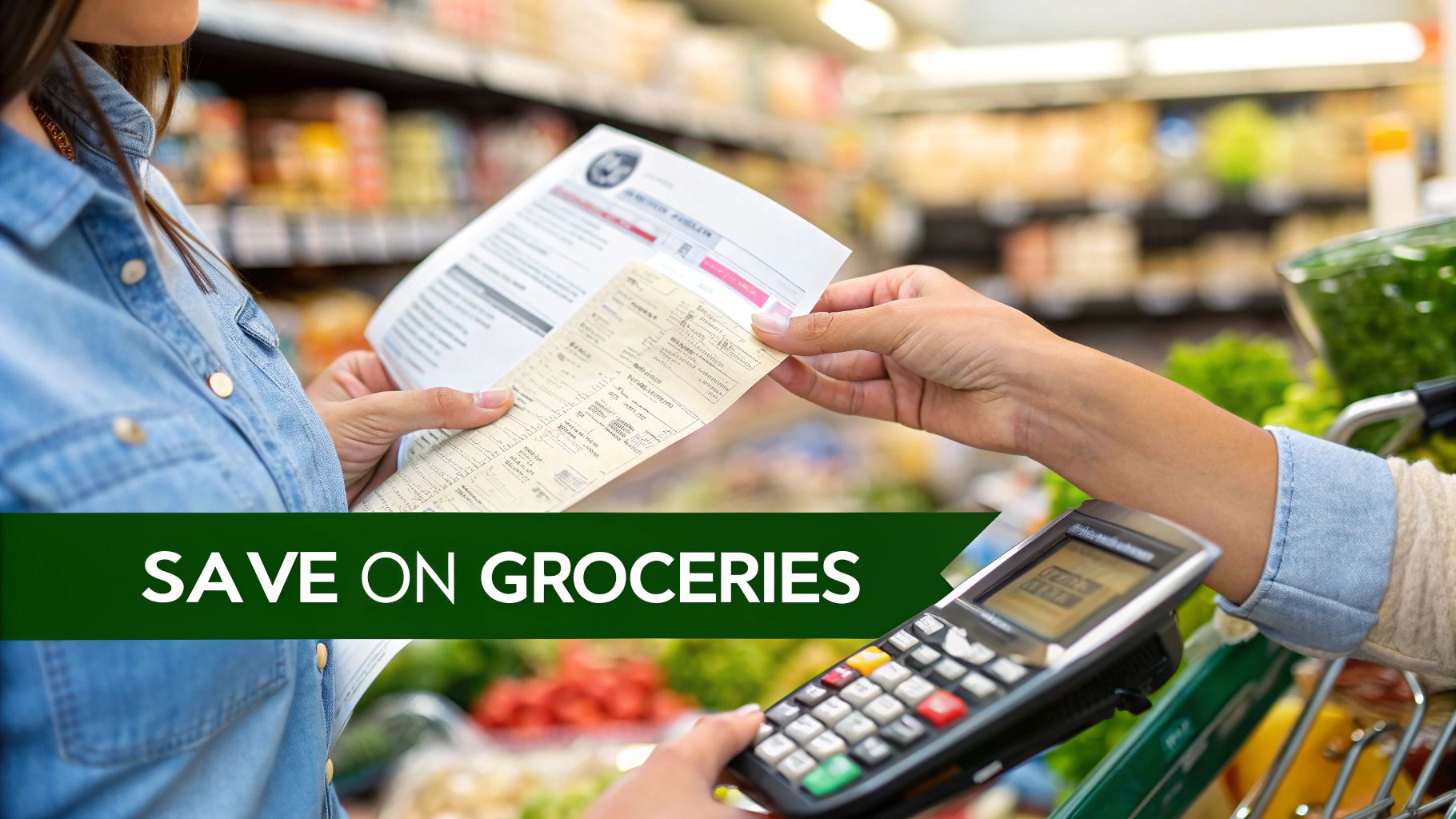
A simple list of items is just the beginning. The way you organize that list drastically affects your shopping efficiency and how much you spend. Think of it like a toolbox: a well-organized one makes finding the right tool a breeze, while a chaotic jumble turns a simple task into a frustrating hunt. This section will explore proven frameworks to transform your shopping list creation, making grocery shopping less of a chore and more of a well-executed strategy.
Categorization Approaches for Efficient Navigation
Tired of crisscrossing the grocery store, retracing your steps for forgotten items? A strategically categorized list is the answer. Organize by store layout, grouping items by aisle. Another approach is cooking workflow, listing ingredients needed for each meal prep session together. Or try meal planning, grouping ingredients for Monday's dinner, Tuesday's, and so on. These methods minimize backtracking and forgotten items, for a smoother shopping experience.
Prioritization, Recurring Items, and Quantity Management
Boost your list's power with some smart coding. Priority coding separates must-haves from nice-to-haves, helping you prioritize within your budget. Distinguish recurring staples (milk, eggs) from one-time purchases to simplify inventory management. And don't forget quantity management: note exactly how much of each item you need. This prevents overbuying, saving you money and reducing food waste. It's like having a built-in budget control for your shopping cart.
Strategies for Multi-Store Shopping and Specialized Templates
For savvy shoppers seeking the best deals, multi-store shopping is a game-changer. But without a plan, it can become a time-consuming nightmare. A well-structured list, organized by store, is key to maximizing savings without sacrificing efficiency. Consider creating specialized templates for different scenarios: a weekly grocery template, a party planning template, or a holiday shopping template. These pre-designed formats streamline list-making, allowing you to quickly generate a list tailored to your specific needs. It's like having a personalized shopping blueprint for every occasion.
Collaborative List Management for Households
Sharing a list with family or roommates? Coordinating multiple shoppers can lead to duplicate items and miscommunication. Digital tools like Meal Flow AI offer shared lists with real-time updates, keeping everyone on the same page. Assigning items to specific shoppers prevents duplication and confusion. This collaborative approach simplifies household shopping and ensures everyone contributes, fostering communication and preventing frustrating mix-ups. It’s like a shared virtual grocery whiteboard, keeping everyone in sync and minimizing shopping stress.
The Future of How We'll Generate Shopping Lists
The humble shopping list is about to get a serious upgrade. Imagine your fridge knowing you're out of milk before you even notice, or your pantry automatically adding olive oil to your online cart. This isn't some futuristic fantasy; it's the reality of grocery shopping just around the corner.
Smart Kitchens and Automated Inventory
The rise of Internet of Things (IoT) devices like smart refrigerators and pantries will completely change the grocery game. These appliances will use sensors to keep tabs on your food levels, automatically creating a shopping list when you're running low. Say goodbye to those frantic last-minute store runs for forgotten ingredients – your kitchen will become your own personal shopping guru.
Predictive Analytics and Anticipatory Shopping
Predictive analytics will take this automation to the next level. By studying your household's consumption habits, these systems will predict your needs with surprising accuracy. Picture your smart fridge ordering your usual almond milk before you even realize it's running low. No more guessing games at the grocery store – you'll always have the essentials on hand.
Augmented Reality and Personalized Shopping Experiences
Augmented reality (AR) will blur the lines between the physical and digital shopping worlds. Imagine strolling through the grocery store with AR glasses that project your digital shopping list onto the shelves, guiding you straight to the items you need. This personalized experience will save you time and make navigating the store a breeze.
Personalization and Health-Conscious Choices
Personalization algorithms will also play a big role in the future of shopping lists. These intelligent systems will tailor suggestions based on your dietary preferences, health goals, and even past purchases. Imagine your shopping list recommending healthier options based on your specific dietary needs, empowering you to make informed decisions that align with your health goals.
Blockchain and Ethical Shopping Decisions
The future of shopping lists isn't just about convenience; it's about ethics too. Blockchain technology will bring unprecedented transparency to the supply chain, giving you detailed information about where your food comes from. Imagine your shopping list telling you the ethical source of your coffee beans or the sustainability practices of your favorite brand. You'll be able to make purchasing decisions based not only on price and preference, but also on ethical impact.
Ready to experience the future of meal planning and grocery shopping? Meal Flow AI is an AI-powered platform that generates personalized meal plans and automatically creates Instacart shopping lists. It's the perfect tool for busy individuals and families who want to simplify their meal planning and grocery shopping process. Check it out today at https://mealflow.ai!